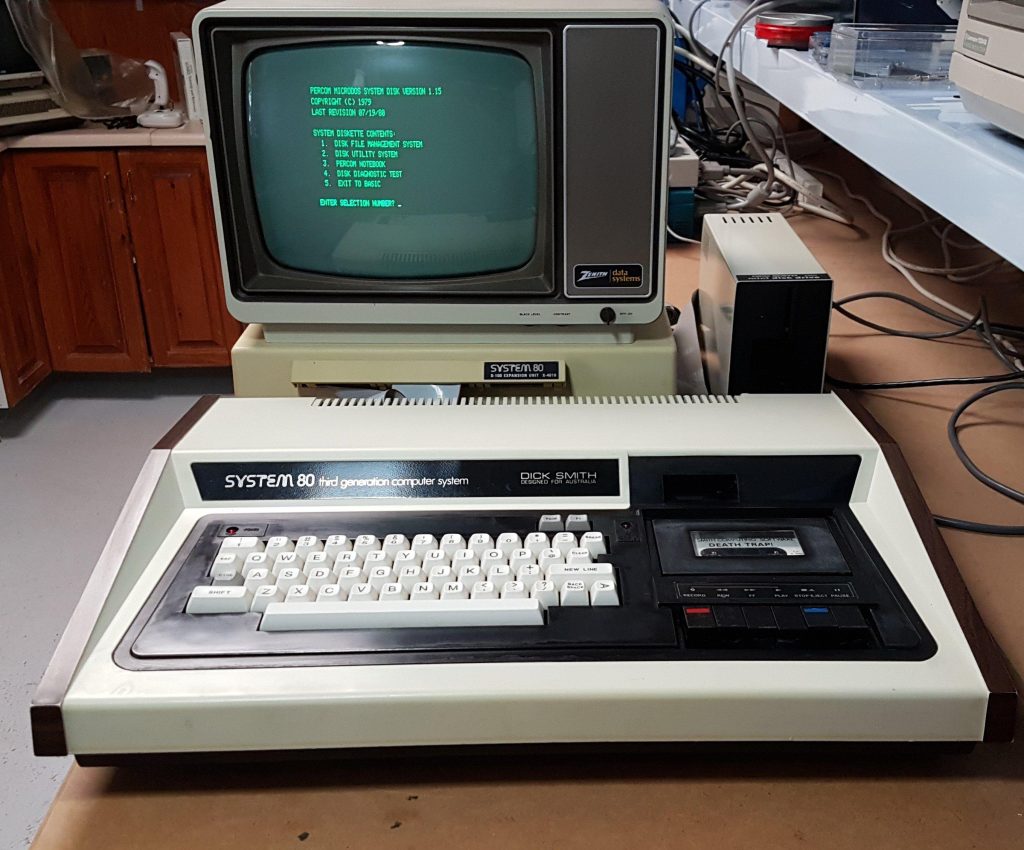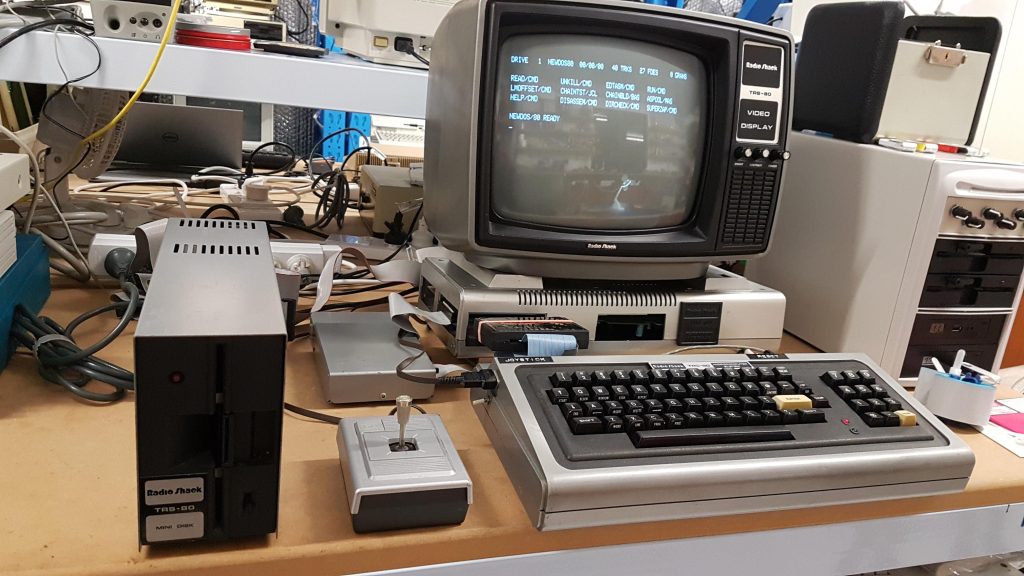- Dick Smith System 80
- System 80 Inspection & Power Up
- System 80 Expansion Unit
- System 80 Floppy Drive Unit
- System 80 Monitor
The System 80 is an attempt, largely successful, to create a machine compatible with the TRS-80 Model I.

Terry Stewart has done a wonderful job of documenting the System 80. Everything that you could ever want to know about it is there. I’ll just focus on my own experience.
I bought this machine from a colleague, Scott, at the Adelaide Retro Computing Group back in 2020. My recollection is that he had collected a number of computers from a seller. This one was outside his interests, so he offered it for sale. I was happy to take it; i never expected to have such an opportunity.
The machine came with an expansion unit and a floppy disk drive. The expansion unit, X4010, has a three slot S-100 backplane. It provides 32k of memory, a disk controller, RS232 port and printer port.

The machine can run any of the myriad of operating systems that were created for the TRS-80 Model 1. Similarly, it can load programs from cassette, just as the TRS-80 Model I can.
This particular machine is an early version with no tape level meter. It has a keyboard modification that replaces one of the shift keys with backspace and tab keys.
It came with a soft plastic dust cover. Instead of protecting the unit, it caused a lot of unsightly “melts” in the plastic. There were also several other issues to work through.
The computer is badged as a “third generation computer” but, as far as i can work out, it would normally be considered a fourth generation computer. Perhaps the usage of the term changed. Or perhaps it is the only example of “underselling” in the computer industry.
































